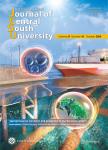Stress distributions on crown-luting cement-substrate system with finite element method
Stress distributions on crown-luting cement-substrate system with finite element method作者机构:Department of Mechanical EngineeringAtaturk University Department of Pediatric DentistryInonu Univer sityFaculty of Dentistry
出 版 物:《Journal of Central South University》 (中南大学学报(英文版))
年 卷 期:2012年第19卷第8期
页 面:2115-2124页
核心收录:
学科分类:08[工学] 0805[工学-材料科学与工程(可授工学、理学学位)] 080502[工学-材料学]
主 题:finite element modeling stress analysis adhesive and luting cement elastic deformation plastic deformation
摘 要:The aim of this work is to analyze the stress distributions on a crown-luting cement-substrate system with a finite-element method in order to predict the likelihood of interfacial micro cracks, radial or circumferential cracks, delamination, fracture and delamination with torsion. The contact and layer interface stresses in elastic layered half-space indented by an elastic sphere were examined using finite element method. The model consists of crown, luting cement and substrate. The solutions were carried out for three different elastic moduli of luting cement. It was placed between the cement and the substrate as a middle layer and its elastic module was chosen lower than the elastic module of crown and higher than the elastic module of dentin. An axisymmetric finite element mesh was set up for the stress analysis. Stress distributions on the contact surface and the interfaces of crown-luting cement and luting cement-dentin have been investigated for three different values of luting cement by using ANSYS. The effects of the luting cement which has three different elastic moduli on the pressure distribution and the location of interfacial stresses of the multi-layer model have been examined. The mechanism of crack initiation in the interfaces and interracial delamination was also studied quantitatively. For each luting cement, the pressure distribution is similar at the contact zone. Stress discontinuities occur at the perfect bonding interfaces of the crown-luting cement and the substrate-luting cement. The maximum stress jumps are obtained for the highest and the lowest elastic module of the luting cement. In the crown-luting cement-substrate system, failures may initiate at crown-luting cement region for luting cement with the lowest elastic module value. In addition, failures at luting cement-substrate region may occur for luting cement with the highest elastic module. In the luting cement, the medium elastic module value is more suitable for stress distributio



